BY BRIGITTE TREUMANN
While I was traveling in Germany and France this summer to spend marvelous days with my far-flung cousins, I called my French friend and archaeologist, Emmanuelle, to see whether we might get together. To my very pleasant surprise she was in France at her parental home in gorgeous rural Languedoc between Toulouse and Albi. She invited me to spend a weekend with her family, an offer I happily accepted. I looked forward greatly to our reunion and this impromptu visit to a region of La Belle France I always wanted to explore.
Many of our esteemed readers will be familiar with the beauty and intriguing history of the Languedoc region that, along with Roussillon and Midi-Pyrenées (southern Pyrenees), has recently become a larger administrative regional concept named Occitanie. It straddles a wide area between Nouvelle Aquitaine (New Aquitania) in the west with Bordeaux as its metropolitan center, and the fabled Provence in the east.

Occitanie.
The name Occitanie refers to the langue d’oc or Occitan language that is, apparently, not only spoken by les vieux (the elderly or old generations), as we were told by a severe-looking lady standing in front of an appetizing cheese display in the local supermarché.
“Non, non,” she said, wagging her finger, “We are all very proud of our Occitan heritage, language, and traditions.” Paraphrasing her schoolmarmish explication, I learned that what is “yes” to us, is oc to them (derived from Latin hoc est, or “that is”) and the more familiar oui of the northern langue d’oil (derived from Latin hoc illud, or “that is so”) to mainstream French speakers.
The Occitan, a neo-Latin language, has a fascinating history and is closely related to the Provençal and neighboring Catalan. The troubadours (composers, poets, and performers, especially on the theme of courtly love) of the High Middle Ages in southern France wrote in the langue d’oc. One of the more famous, Bernard de Ventadour, sang at the ducal and royal courts of Eleanor of Aquitaine. Rumor has it that he admired and loved the duchess and formidable queen, presumably at a courtly, sweet and poetic distance ”when she bent upon him her eyes, full of fire and eloquence, he felt the joy of Christmas fête, noble and sweet, loyal and faithful.” It seems strange, but you can actually listen to one of his wonderful verses on YouTube.

The vine-wreathed door of my hosts’ mas.
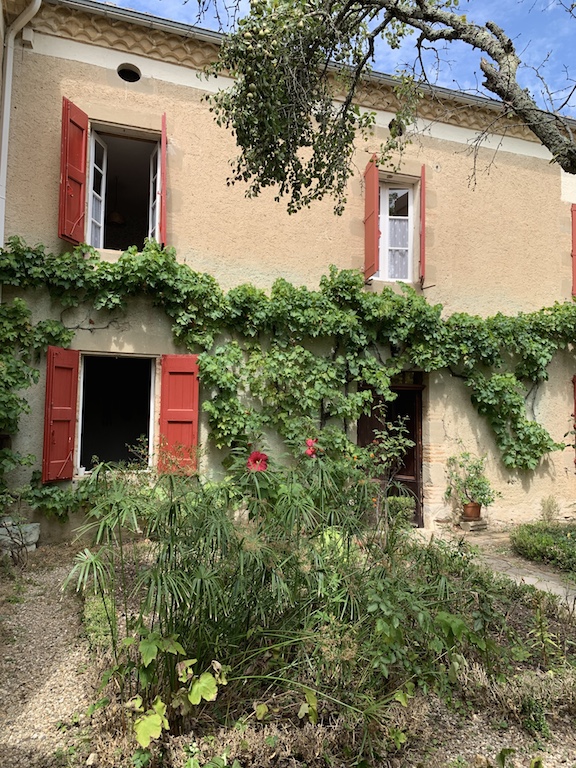
Red flowers echoed by red shutters of the mas.

Sundial on the ancient wall with a Latin inscription Festina Lente –Tempus Edax Rerum (be slow in haste – time will take care of all matters).
Emmanuelle’s family lives in this authentic, quaint, minimally restored languedocien mas, a traditional, southern French country house built in 1788 for a comfortably-off village curé (priest). The bells of the close-by village gothic church strike the quarter hours, a sound I found very romantic and poignant. It awoke me on my first morning and as I threw open the brilliantly-red shutters, I beheld the sun illuminating the gently undulating landscape, it’s Mediterranean hues, and southern vegetation, and with a bit of imagination, I felt the not-so-distant sea (a mere 3 hours away), a sea the Romans called the Mare Nostrum, Our Sea. La Mediterranée! It was a glorious early morning moment.
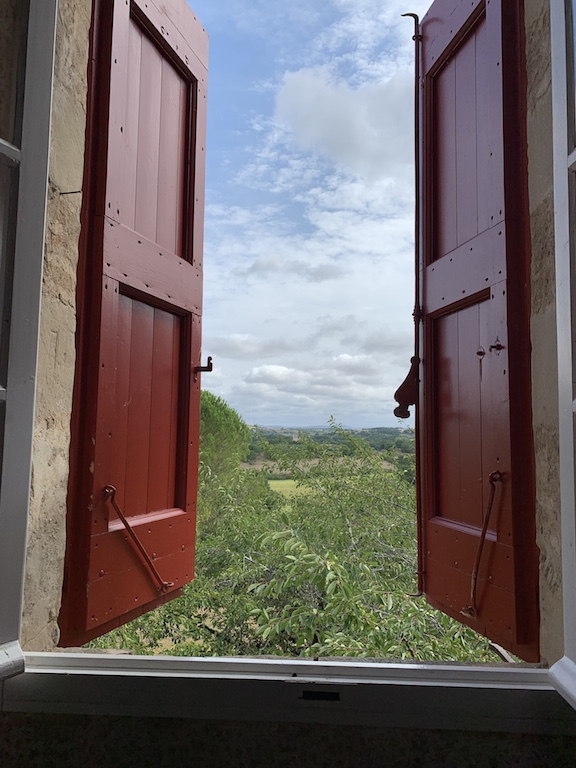
The view from my window.
We spent most of our time out of doors, walking among their olive trees, the grape arbor, and checking the slowly ripening figs. We had lunch and dinner under a leafy canopy and sat by the ancient well late into the night, sipping the local vin de pays. I felt like singing, “Starry, Starry night,” thinking that the great Vincent painted this sky not too far from where we sat.
We drove to Albi, la ville rouge (the red town), so named after the stunning red-brick architecture of the gothic cathedral, Sainte-Cécile, and of its neighbor, the Palace of Berbie. The palace has now been converted into a very well-designed museum, dedicated primarily to the works of the incomparable post-impressionist painter, printmaker, draughtsman, and caricaturist, one of my favorites, Henri de Toulouse-Lautrec who was born in Albi on November 24, 1864.

Sainte-Cécile, Albi.

Palace of Berbie.
Sunday morning I accompanied Madame Vila, Emmanelle’s distinguished, sprightly nonagenarian mother, to Saint-Rémy church in nearby charming medieval-walled hamlet Lautrec. En route we stopped at the go-to boulangerie of the region, still family-owned and operated, with a real baker baking real bread. I was told that, regrettably, these local individual bakeries are slowly disappearing. When we arrived around ten o ‘clock, the bakery was open for two hours, from nine to eleven on Sundays, and the line went around the city wall, so to speak. Having partaken of these incredibly delicious, crisp, and crusty baguettes, I can see why.
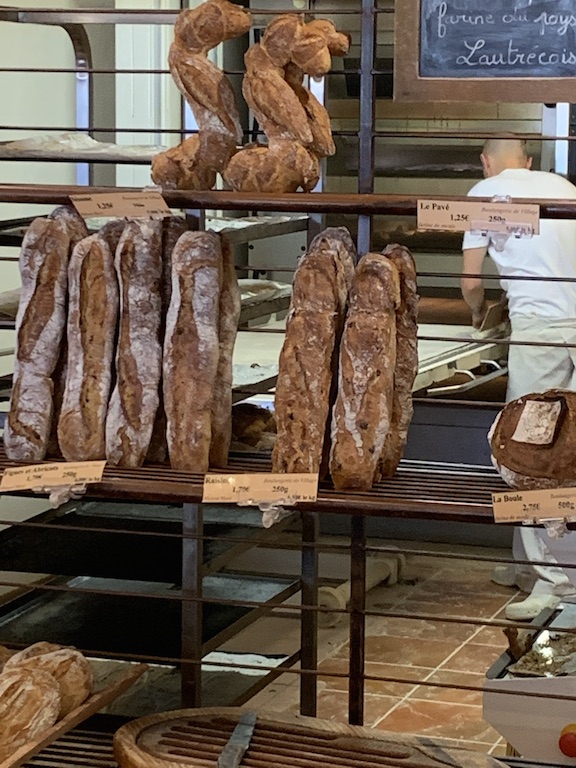
Les baguettes.
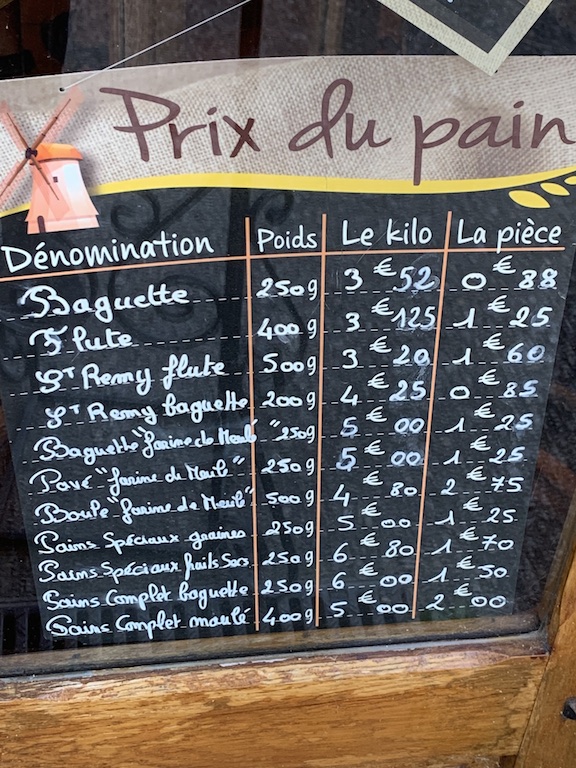
Prix du pain.
Lautrec, a medieval, 13th to 14th century marketplace, now a small town with some remarkable gothic architecture in the heart of the former vicountcy of Toulouse-Lautrec, is listed among “The Most Beautiful Villages of France.” A much earlier, well-built road that is still in use, attests to its Roman origins. The picturesque fortified gate, the only remaining out of 8 original structures, the porte de la Caussade (Caussada in Occitan), meaning something like High Street, leads into the appealing, lively village. It appears to have become quite popular with artists, galleries, musicians, and free and easy seasonal dwellers who enjoy living among the ancient courtyards, towers, and medieval garrets. We took a longer hike up to the Colline de la Salette that marks the site of a former castle. From here one has amazing views across the Lacaune hills, to the Montagne Noire, and, on a clear day, the distant Pyrenees.
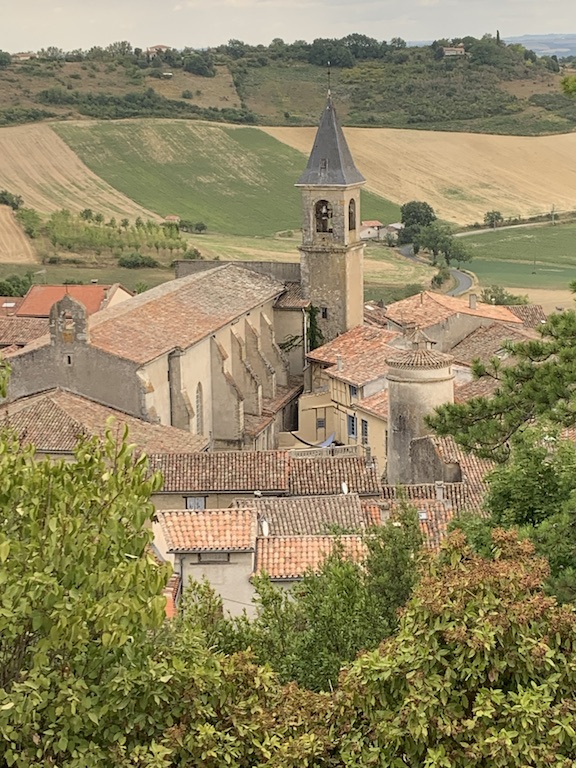
A picture-book vision of Lautrec.

Cavalier perché, making his way across the gate.
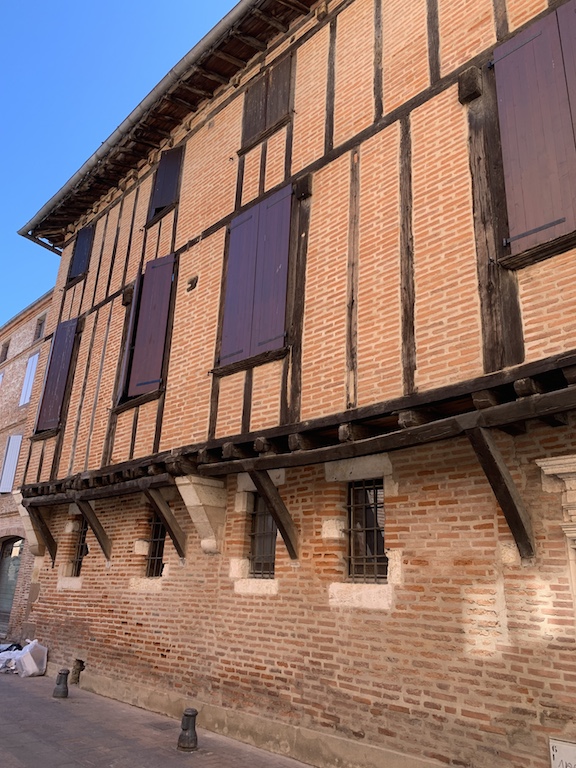
Les Halles de Lautrec (medieval market hall).
The Montagne Noire (also known as the Black Mountains) has strong associations with the medieval Cathar church that flourished predominantly in Occitanie in the 11th and 12th centuries. At serious odds with the Catholic Church that considered their beliefs heretic, many Cathars sought refuge in their spiritual centers and strongholds in the Montagne Noire. They were ultimately persecuted and finally annihilated in their last refuge at the castle of Montségur in 1244. But their history lives on in monuments, street signs, hotel, and pension appellations, as for example La Pause Cathare (a bed and breakfast auberge) and, of course, in the many chateaux (mostly mere romantic ruins) scattered throughout Occitania.
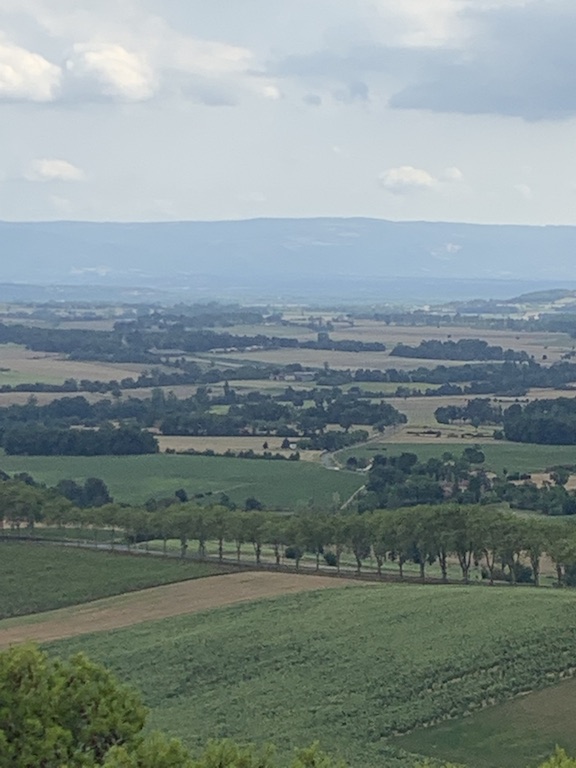
On a clear day you can see the Pyrenees.

The mas under a wind-blown sky.
Later, back in the lovely mas, we sat around the authentic 18th-century fireplace to reminisce and make plans for future visits. The handsome fireback is adorned with the Occitan cross, the symbol of Occitania since the High Middle Ages that endures to this day.






